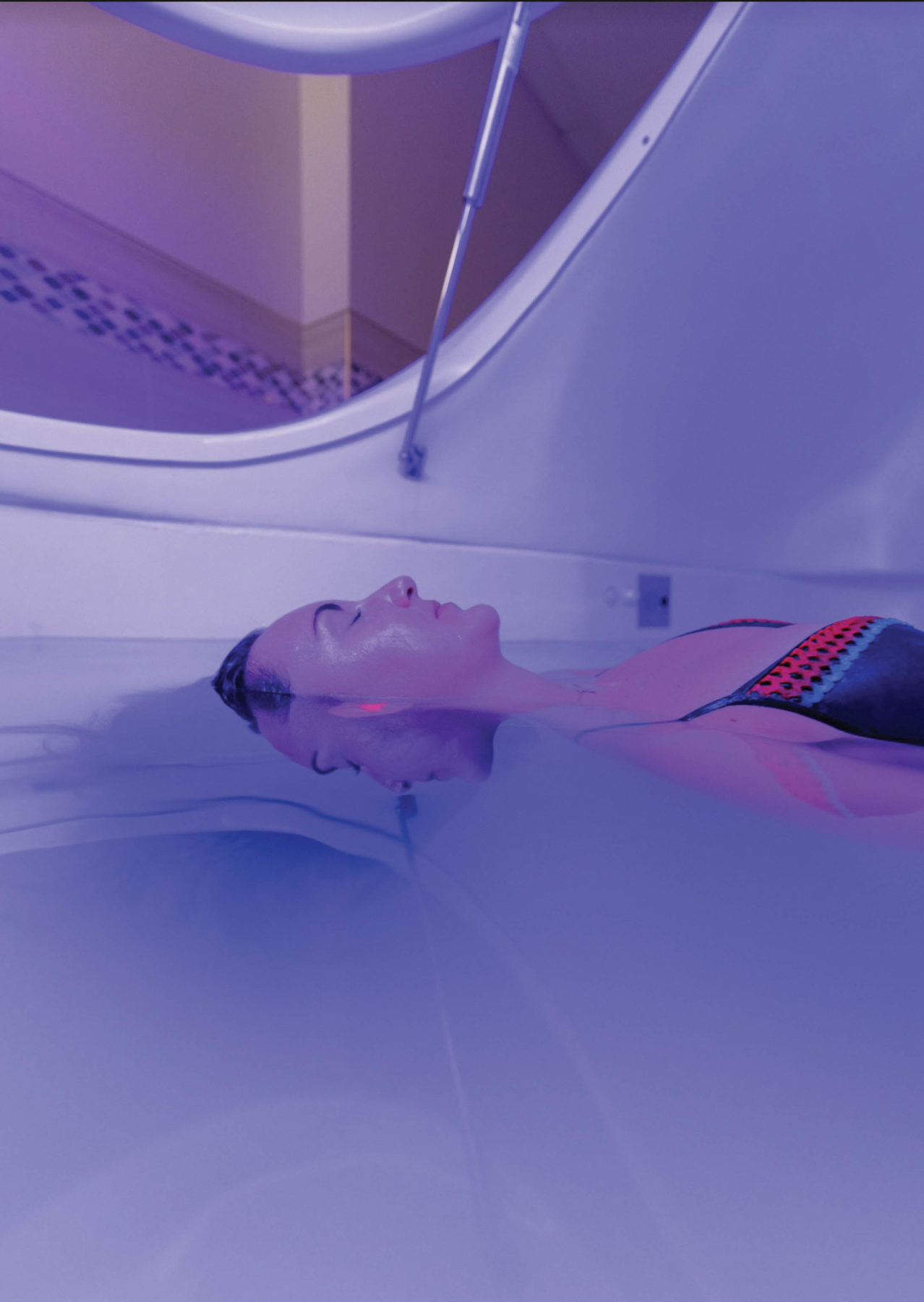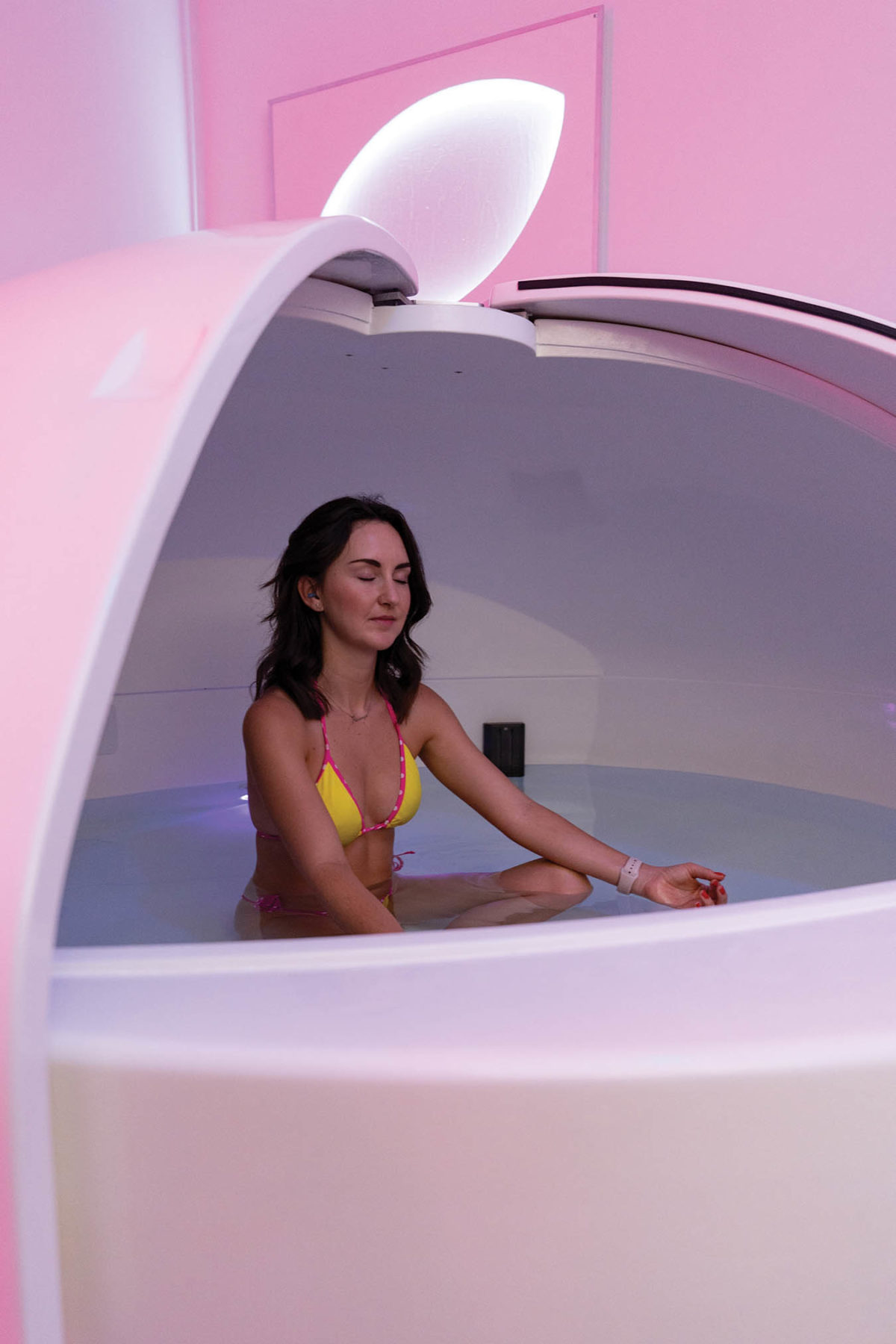All About Float Tanks

At first glance, it may seem daunting to step into what looks like a mini spaceship with a foot of water in it. However, once you are inside and floating on the water, you are sure to experience something incredible.
Sensory deprivation tanks, also known as float tanks, are zero gravity environments used for Reduced Environmental Stimulus Therapy (REST). The tanks range in size but a typical tank is 8-feet-long by 4.5-feet-wide. They are filled with about a foot of skin-temperature water and 1,000 pounds of epsom salts to provide buoyancy for an effortless floating experience.

John C. Lilly, an American neuroscientist and physician, designed the first float tank in 1954 to explore the origins of consciousness by taking away all external stimuli. By the 1970s, float tanks were commercialized and scientists started studying them for their health benefits.
Today, research shows that float therapy provides multiple different health benefits, including pain relief, relaxation, decreased stress and anxiety, and sleep improvement. The benefits also build on themselves with each subsequent float session.
“For me, it’s very euphoric,” says Emily Kolb, a massage therapist in Austin. “It’s mostly meditation and just feeling no pain in my body because I am floating.”
Kolb got into floating seven months ago when a friend of hers introduced her to it. Now, she floats at least four times a week but wishes she could go everyday.
When you enter the float pod and close the lid, you lay down on your back and begin floating. It is recommended that you float unclothed, since any material on your body will take away from the sensory deprivation experience. The experience is truly up to one’s own choice so once inside the tank, you can find a comfortable position and may even shut your eyes if you desire.

Inside the tank, you are completely cut off from all outside stimulation — gravity, sight and sound. By removing the stimuli from your senses, your brain is supposed to enter into a deeply relaxed state.
“You’ll be amazed at how good your body feels when you take gravity away,” says Mandy Rowe, a float therapy expert who works in franchise development for True REST Float Spa. “Even when you’re laying in bed, that gravity is pulling on your spinal cord and your muscles.”
Founded eleven years ago, True REST Float Spa now has two locations in Austin and one in Cedar Park. The company also previously had a contract with The University of Texas football team but the team now has their own float pods back at campus.
True REST likes to think of floating “as a reset button with three levels” — salt, weightless and meditation. In addition to helping you float with ease, the epsom salts act as an exfoliant for your skin and help prevent muscle inflammation. The second level, being weightless, helps create a relaxing environment and relieves all weight and tension, allowing your body to undergo the same regeneration processes that occur during sleep. Thirdly, the tank encourages meditation, as it provides zero distractions.

“When you’re in the float pod, the ideal state that we’re trying to hit is the theta wave state — that’s your dreamlike state,” says Rowe, who floats at least once every week. “If you imagine being in a dreamlike state for an hour, that’s really what floating is like. It’s a chance for you just to decompress and relax for a bit.”
The average float session is in an hour, however, you can float longer if you are comfortable. Rowe explains that recently she has been working up to doing 2.5-hour floats.
While float therapy is safe, it is not recommended for anyone with a pacemaker, epilepsy, kidney disease or anyone who is claustrophobic. However, there is always the option to float with the lid of the tank open, but that does take away from the experience as Rowe recommends that in order to have the best possible session, you must experience sensory deprivation in its purest form.
Rowe also recommends that one should avoid caffeine before a float session and eat something light since you can hear everything while in the tank.
“People are always surprised by how loud their heartbeat actually is,” Rowe explains. “When you remove all other sounds, you can hear your eyelids blink and your stomach digest.”
Rowe recommends floating at least once a month if you are looking for a good maintenance schedule. However, there is no restriction on how much you can float.
“Come in with an open mind and you’re gonna find some benefit out of it, whether it’s physical, mental or emotional,” Rowe says.






